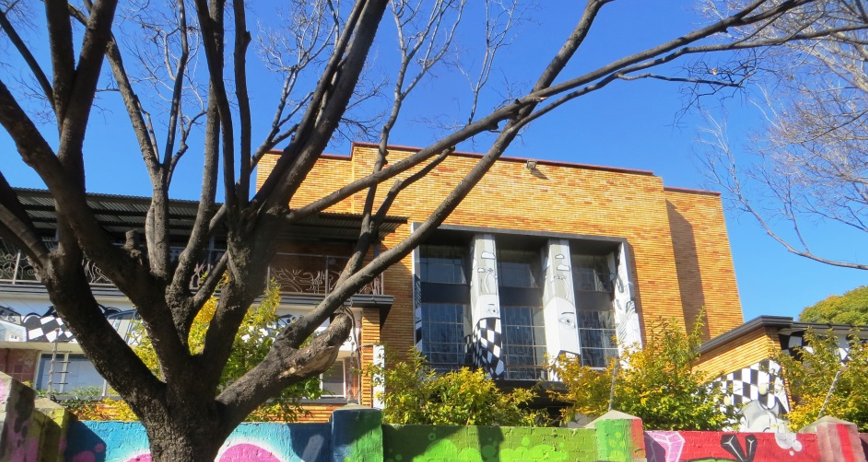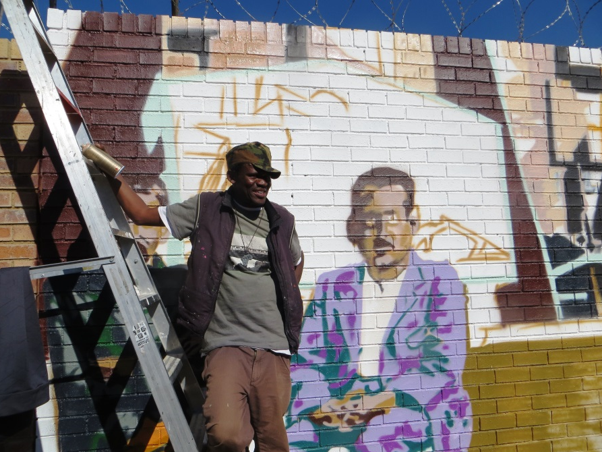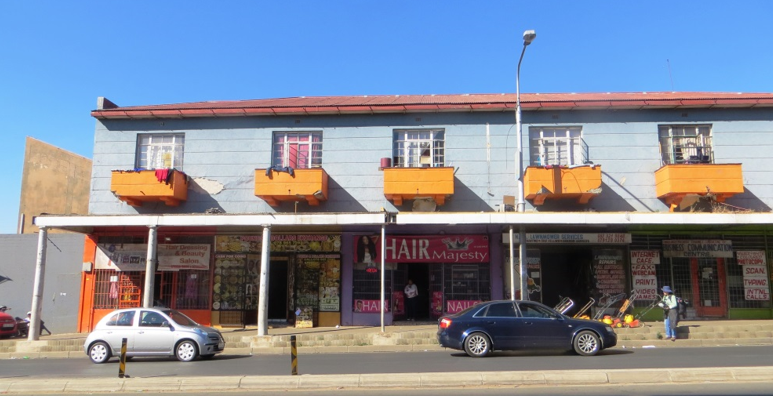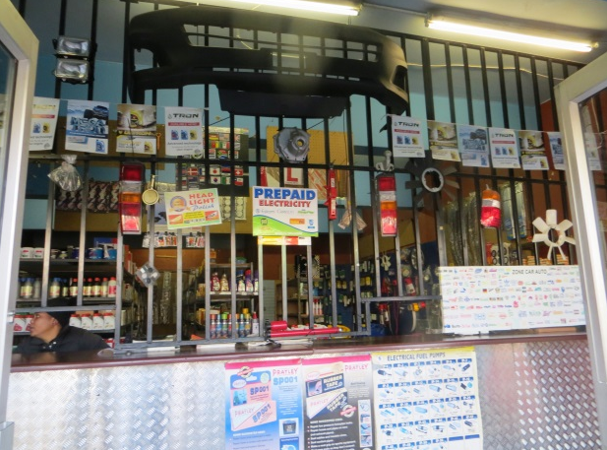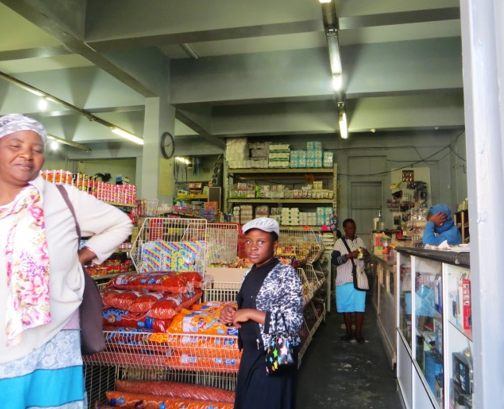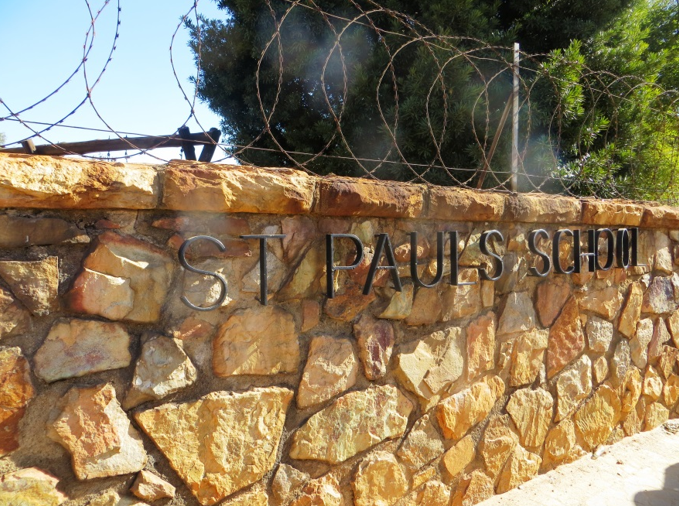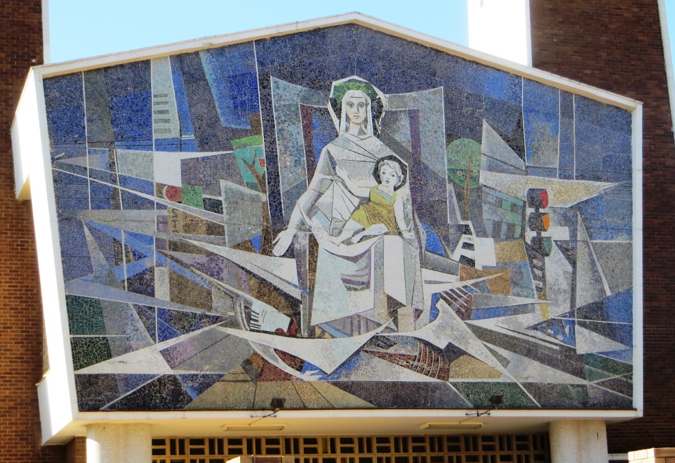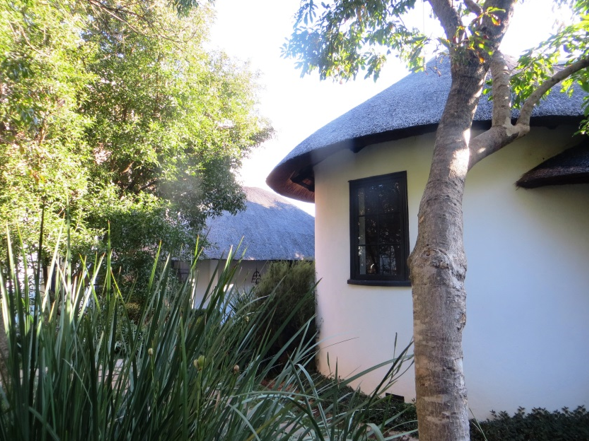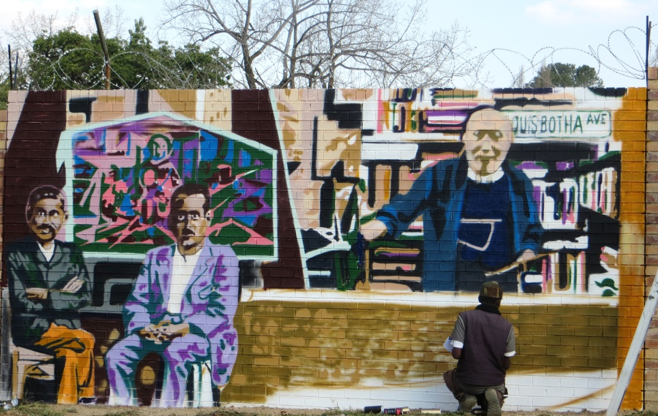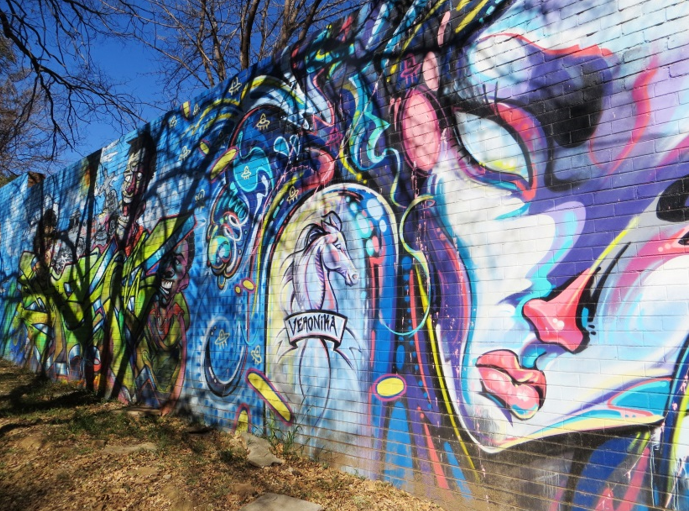
Disclaimer: Any views expressed by individuals and organisations are their own and do not in any way represent the views of The Heritage Portal. If you find any mistakes or historical inaccuracies, please contact the editor.
The weekend of the 24/25 June 2017 saw the launch of the Jozi Walks initiative of the Johannesburg Development Agency (JDA). Individuals, community organizations, tourism companies and NGOs joined hands in offering a series of free and innovative walks through Johannesburg, north, south, east and west. It was exciting, fun and showed off Jozi at its best over a two day celebration of the Jane Jacobs walk my city philosophy.
60 people joined Brett McDougall and Kathy Munro of The Johannesburg Heritage Foundation (JHF) on a Sunday afternoon for a three hour guided walk through the eastern Joburg suburbs of Orchards, Maryvale, Sydenham and Orange Grove. The theme was 'Louis Botha Corridor of Creativity'.
The walk started at the Orchards Project at 6 Pine Road where we launched Jozi Walks and told our guests about the JHF. Everyone was armed with a map. Roger Chadwick of the Orchards Project spoke about the opportunities for public street art in the neighbourhood with the walls along Louis Road and the Spark Gallery turning creative graffiti into an art form. Our first stop was at the 1946 communal hall of the North Eastern congregation of the Jewish Community, the forerunner of the Pine Street shul; today it is the 24 Carrots building and has passed on to new uses and hands but the façade of golden, facebricks and the style of the 40s’ with contemporary street art enhancing the frontage is worth close inspection. This was the moment for a group photograph.
1946 North Eastern Congregation Communal Hall (Kathy Munro)
We walked down Louis Road. Walking west, the wall art is a vibrant riot of colour and creativity; here graffiti artists have converted forbidding security walls along the edge of properties on this main road, into an eye catching street gallery (see main image). Barbed wire topping ceases to be noticed and instead you pause to puzzle meaning and form in these works of art. The warm winter sun and bare branches of the jacaranda trees provide perfect frames.
Our second stop was to watch artist Sandile Radebe creating a new mural on a new stretch of wall on Louis Road. This is a historical mural on a public wall at the side of the main road connecting Orange Grove and Norwood. The work has been commissioned by the JHF with its sponsorship prize from the JDA. Sandile captures the images of Gandhi, Herman Kallenbach (the historic greats) and the contemporary book man of note, Richard Welsh and his Kalahari bookshop.
The artist Sandile with his Gandhi – the wall artist at work (Kathy Munro)
As we walked along Louis Botha Avenue we engaged with new friends and talked history, architecture, community roots and changing urban trends. The contrast between the Corridor of Freedom on loud brash somewhat decayed Louis Botha Avenue with its promise of higher density living, people lounging or purposeful on pavements and an upgraded Rea Vaya transport system against the quiet leafy side roads with unchanged houses from the 1930s and 40s raised questions about what should change and what should stay the same.
Shops and Apartments on Louis Botha Avenue (Kathy Munro)
Louis Botha introduces a different pace of life and exudes an African feel to the shops. Activity and trade flows out onto the pavement. You can buy everything possible from essential foodstuffs and fresh veg to air time, a beer or two, a hair piece, spare parts for your car, clothes, furniture or even a tombstone. We are reminded that the urban environment is a messy place, there is nothing orderly here and there’s a contrast between the cars speeding to catch the next traffic light and the pedestrians who shop on their way home.
Barricaded Sales Counter (Kathy Munro)
Inside a shop on Louis Botha (Kathy Munro)
The walk took about 2 hours and stops included the historic Pine Road Synagogue, the former home of Mahatma Gandhi (Satyagraha House), the historic Good Shepherd convent (now a Torah academy) with its fine craft shaped and built natural quartz rock wall, the Assumption Convent, the 1938 original church, the Catholic Church of Our Lady of the Wayside with the wonderful Baldinelli mosaic and Maryvale Mineral Water Works. We passed the fantastic Kalahari Books - a treasure trove for readers.
St Paul’s School – an old stone wall topped by barbed wire (Kathy Munro)
The Baldanelli Mosaic fronting Our Lady of the Wayside Catholic Church (Kathy Munro)
Our final stop was for tea and cream scones at Satygraha House, the original home of Herman Kallenbach and Gandhi circa 1908. Originally called the Kraal, it comprises the two original rondavels designed by the architect Kallenbach, together with new garden rooms for overnight guests. It is a museum to the friendship and life of Kallenbach and Gandhi, a place of pilgrimage, a sanctuary of quietude, a focus history and homage to Gandhi and his South African years. Satygraha house is a superb example of quality conservation heritage architecture where the history meets modern adaptive reuse as a guesthouse. The architect was the late Rocco Bosman. Our hosts were Lionel Deodat and Celine, who led our large party through the public rooms, pointing out the key features and bringing Kallenbach and Gandhi to life.
Rondavels of Satyagraha House (Kathy Munro)
In particular this JoziWalk looked at the changing face of Louis Botha Avenue and surrounds, the contribution of immigrant communities and religious institutions and schools along Louis Botha Avenue to the heritage of the area, local organisations and businesses with a social conscience, architectural gems and street art.
It was a good model for a local walking tour and a chance to energise the streets raising awareness of the heritage of a neighbourhood, connect people of the community and bring the Jane Jacobs philosophy to Johannesburg.
On Monday I returned to Louis road to find Sandile putting the final touches to his work of Art (Kathy Munro)
Kathy Munro is an Honorary Associate Professor in the School of Architecture and Planning at the University of the Witwatersrand. She enjoyed a long career as an academic and in management at Wits University. She trained as an economic historian. She is an enthusiastic book person and has built her own somewhat eclectic book collection over 40 years. Her interests cover Africana, Johannesburg history, history, art history, travel, business and banking histories.
Comments will load below. If for any reason none appear click here for some troubleshooting tips. If you would like to post a comment and need instructions click here.

